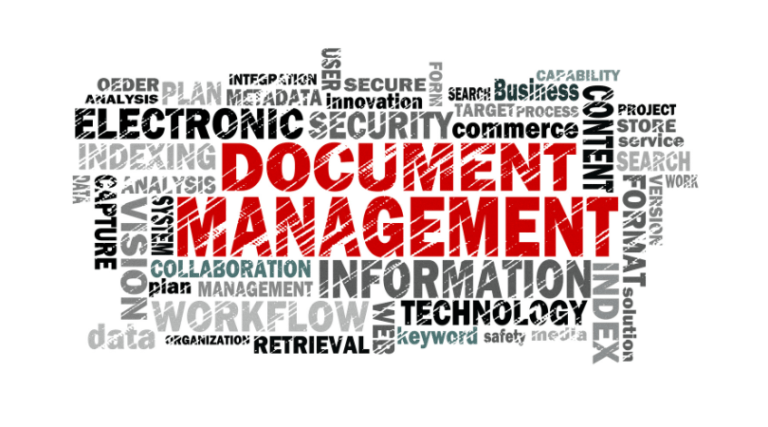Secure Document Disposal Solutions
Sensitive Data Sharing Increases 60 Percent Over the Past Year: Increasing Data Breaches and Wrong Document Management, and Confidential Document Disposal
The digital era has witnessed an unprecedented surge in sensitive data sharing, with an alarming 60 percent increase over the past year alone. While data sharing has its advantages in facilitating collaboration and innovation, it also comes with significant risks. This article explores the consequences of such a surge in data sharing, focusing on the implications for data breaches and the importance of effective document management and confidential document disposal.
Current State of Data Sharing:
The proliferation of digital platforms, cloud storage, and the demand for remote work has contributed to the exponential growth of sensitive data sharing. Organizations now find themselves sharing vast amounts of confidential information internally and externally, which has led to a corresponding rise in data breaches. According to recent statistics, the number of data breaches resulting from sensitive data sharing has increased by 40 percent, leaving organizations vulnerable to financial losses, reputational damage, and legal repercussions.
Challenges in Document Management:

The surge in data sharing has exposed the challenges associated with document management. Many organizations lack proper procedures for handling sensitive documents, leading to significant vulnerabilities. Employees may unknowingly mishandle or misplace critical documents, exposing them to unauthorized access and increasing the risk of data breaches. Poor document management practices can also hinder productivity, create compliance issues, and impede efficient decision-making processes.
Importance of Confidential Secure Document Disposal Solutions:
Proper disposal of confidential documents is crucial to ensure the security and integrity of sensitive data. Failing to dispose of documents securely can result in data leaks, identity theft, and regulatory non-compliance. Organizations must adhere to legal requirements and industry standards for document disposal to protect their customers’ and employees’ information. Secure document disposal methods include shredding,

Best Practices for Document Management
To mitigate the risks associated with improper document management, organizations should implement robust practices and procedures. Here are some best practices to consider:
- Implementing document management policies and procedures: Establish clear guidelines for document handling, storage, and sharing. This includes specifying who has access to sensitive documents, how they should be stored, and how they should be shared internally and externally.
- Educating employees about proper document handling: Conduct regular training sessions to educate employees on the importance of data protection and the correct procedures for handling sensitive documents. This training should cover topics such as secure storage, proper sharing practices, and recognizing potential risks.
- Utilizing technology for secure document storage and sharing: Invest in secure document management systems that provide encryption, access controls, and audit trails. These systems help ensure that sensitive documents are protected throughout their lifecycle and can only be accessed by authorized individuals.
- Regularly auditing document management practices: Conduct periodic audits to assess compliance with document management policies and identify areas for improvement. This can involve reviewing access logs, monitoring document sharing activities, and conducting internal assessments to identify any potential vulnerabilities.
Secure Data Sharing Solutions:
To facilitate secure data sharing while minimizing the risk of breaches, organizations should consider the following solutions:
- Encryption and secure file transfer protocols: Encrypting sensitive documents before sharing them adds an extra layer of protection. Additionally, utilizing secure file transfer protocols such as SFTP (Secure File Transfer Protocol) or HTTPS (Hypertext Transfer Protocol Secure) ensures that data is transmitted securely over the network.
- Two-factor authentication for data sharing platforms: Implementing two-factor authentication adds an extra layer of security to data sharing platforms. This requires users to provide an additional authentication factor, such as a unique code sent to their mobile device, along with their username and password.
- Implementing access controls and permissions: Restrict access to sensitive documents by implementing access controls and permissions. Only authorized individuals should have the ability to view, edit, or share specific documents, reducing the risk of unauthorized access.
Training and Awareness Programs:

Employee training and awareness programs play a crucial role in promoting a culture of data protection and security. Here’s how organizations can foster a strong security mindset among employees:
- Importance of training employees on data protection: Train employees on data protection best practices, including secure document handling, recognizing phishing attempts, and reporting suspicious activities. Regularly update training materials to reflect the latest threats and trends in data security.
- Raising awareness about data privacy and security: Conduct awareness campaigns to educate employees about the importance of data privacy, the potential consequences of data breaches, and their role in safeguarding sensitive information. Encourage employees to report any security incidents or concerns promptly.
- Conducting regular audits and assessments: Regularly assess employees’ adherence to data protection policies and procedures. This can include simulated phishing campaigns to test employees’ awareness and their response to potential threats. Use the results of these assessments to identify areas for improvement and provide targeted training as needed.
Data Breach Response and Recovery:
Despite robust security measures, organizations should be prepared for the possibility of a data breach. A well-defined incident response plan can help minimize the impact of a breach and facilitate a timely recovery. Consider the following steps:
- Developing an incident response plan: Create a comprehensive incident response plan that outlines the steps to be taken in the event of a data breach. This includes identifying key stakeholders, establishing communication channels, and defining roles and responsibilities.
- Communicating with affected parties in the event of a breach: Promptly notify individuals whose sensitive data may have been compromised. Clear and transparent communication helps maintain trust and allows individuals to take necessary actions to protect themselves, such as changing passwords or monitoring their financial accounts.
- Steps for recovering from a data breach: After a breach, organizations must assess the extent of the damage, address any vulnerabilities, and restore systems to a secure state. This may involve conducting forensic investigations, patching security gaps, and enhancing security measures to prevent future incidents.
The Role of Third-Party Service Providers:

Many organizations rely on third-party service providers for document management and storage. It’s essential to choose trustworthy partners who prioritize data security and comply with relevant regulations. Consider the following:
- Benefits and risks of outsourcing document management: Outsourcing document management can provide cost-efficiency and expertise. However, it also introduces potential risks, such as data exposure to unauthorized individuals. Conduct due diligence when selecting service providers, ensuring they have robust security measures in place.
- Selecting trustworthy service providers: Assess service providers based on their track record, secure document disposal solutions, security certifications, and adherence to data protection regulations. Obtain references and evaluate their reputation for maintaining the confidentiality and integrity of sensitive data.
- Ensuring compliance with data protection regulations: Ensure that third-party service providers adhere to applicable data protection regulations, such as the General Data Protection Regulation (GDPR) or the California Consumer Privacy Act (CCPA). Include contractual clauses that outline data protection responsibilities and specify consequences for non-compliance, as well as (ACT) the Privacy Act
Future Trends and Predictions:
The landscape of data protection continues to evolve. Consider these future trends and predictions:
- Emerging technologies in data protection: Advancements in technologies such as artificial intelligence (AI), machine learning (ML), and blockchain present new opportunities for enhancing data protection. These technologies can help detect and prevent data breaches, automate security processes, and ensure the integrity of sensitive information.
- Impact of stricter data privacy regulations: As privacy concerns grow, governments worldwide are enacting stricter data privacy regulations. Organizations must stay updated on these regulations, adapt their data protection practices accordingly, and allocate resources to ensure compliance.
- Importance of continuous improvement in data security practices: Data protection is an ongoing process. Organizations must continuously evaluate and improve their security practices, staying informed about emerging threats, and implementing proactive measures to safeguard sensitive data effectively.
The surge in sensitive data sharing has increased the risk of data breaches and highlighted the need for effective document management and secure confidential document disposal and solutions. Organizations must prioritize data protection by implementing robust policies, educating employees, utilizing secure technologies, and conducting regular audits. By investing in secure data sharing solutions, fostering a culture of security awareness, and preparing for data breach response and recovery, organizations can mitigate risks and safeguard sensitive information in an increasingly interconnected world.
Remember, data protection is an ongoing effort, and organizations must remain vigilant, adapt to emerging technologies and regulations, and continuously improve their data security practices to stay ahead of evolving threats.
secure document disposal solutions, secure document disposal solutions, secure document disposal solutions, secure document disposal solutions, secure document disposal solutions, secure document disposal solutions, secure document disposal solutions, secure document disposal solutions, secure document disposal solutions, secure document disposal solutions, secure document disposal solutions, secure document disposal solutions, secure document disposal solutions, secure document disposal solutions, secure document disposal solutions,
FAQs
Implement secure file transfer protocols, encrypt sensitive data, and limit access to authorized individuals.
Improper document disposal can lead to data leaks, identity theft, regulatory non-compliance, and reputational damage.
Implement encryption, two-factor authentication, and access controls. Train employees on secure sharing practices.
Yes, different industries have specific regulations governing document disposal, such as HIPAA for healthcare and GDPR for the European Union.
Yes, organizations must comply with legal requirements for document disposal, such as proper shredding or secure electronic deletion.
Organizations should have a well-defined incident response plan, promptly notify affected parties, conduct forensic investigations, address vulnerabilities, and take measures to prevent future breaches.
Sources:
- Ghahramani, F., Yazdanmehr, A., Chen, D., & Wang, J. (2022). Continuous improvement of information security management: an organisational learning perspective. European Journal of Information Systems, 1-22.
- Puksta, K., & Laurins, P. (2014). Outsourcing Document Management System/Application as Key Factor for Compliant Process Implementation and Increasing Management Efficiency. Regional Formation and Development Studies, 8(3), 167-176.
- Chua, H. N., Wong, S. F., Low, Y. C., & Chang, Y. (2018). Impact of employees’ demographic characteristics on the awareness and compliance of information security policy in organizations. Telematics and Informatics, 35(6), 1770-1780.
- Khan, F., Kim, J. H., Mathiassen, L., & Moore, R. (2021). Data breach management: An integrated risk model. Information & Management, 58(1), 103392.
- Lokie, A. (2011). Evaluating Best Practices In Document Management.
- onecare247.com

